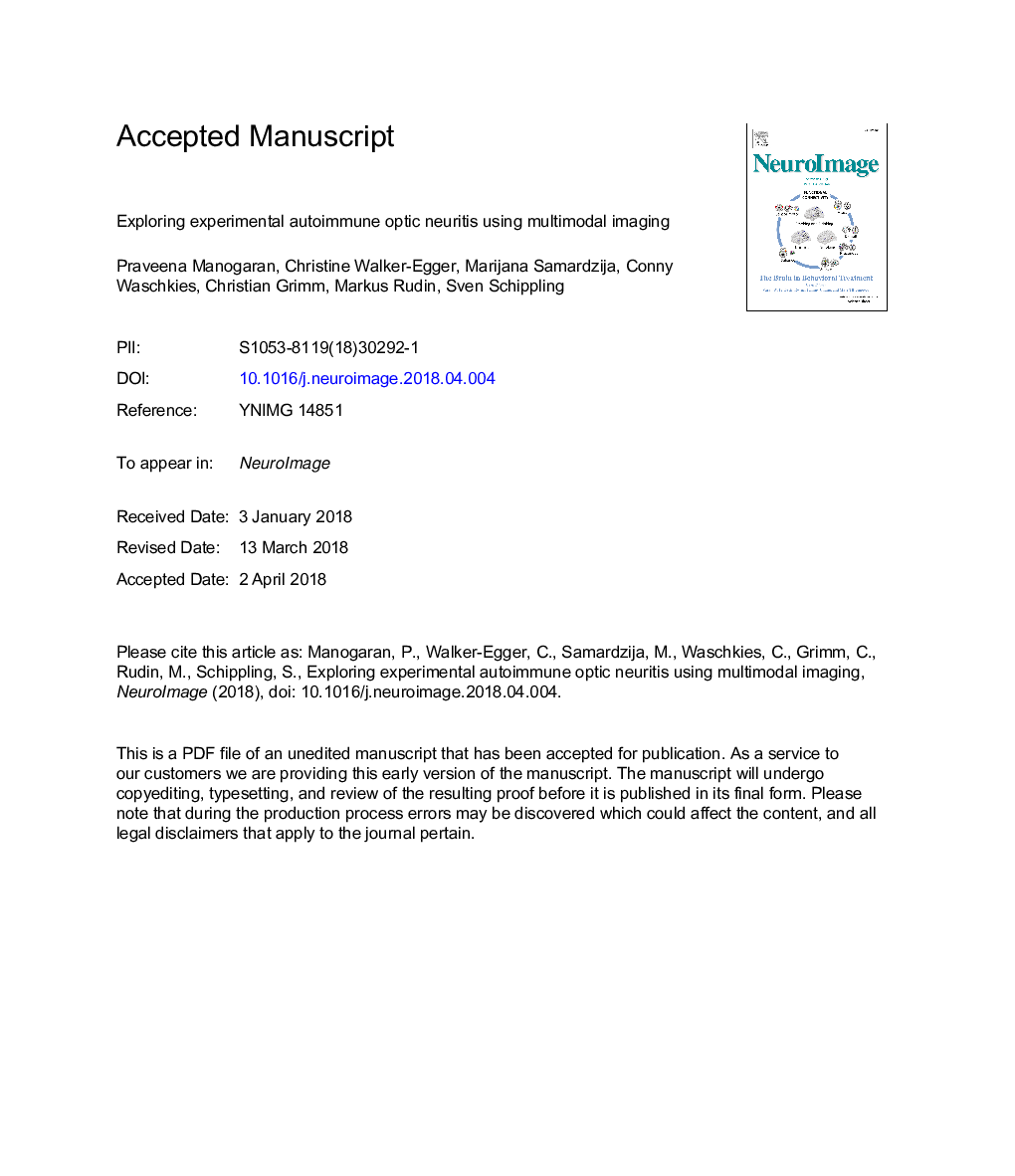| Article ID | Journal | Published Year | Pages | File Type |
|---|---|---|---|---|
| 8686884 | NeuroImage | 2018 | 35 Pages |
Abstract
OCT detected GCC changes in EAE may resemble what is observed in MS-related acute ON: an initial phase of swelling (indicative of inflammatory edema) followed by a decrease in thickness over time (representative of neuro-axonal degeneration). In line with OCT findings, DTI of the visual pathway identifies EAE induced pathology (decreased AD, and increased RD). Immunofluorescence analysis provides support for inflammatory pathology and axonal degeneration. OCT together with DTI can detect retinal and optic nerve damage and elucidate to the temporal sequence of neurodegeneration in this rodent model of MS in vivo.
Keywords
Related Topics
Life Sciences
Neuroscience
Cognitive Neuroscience
Authors
Praveena Manogaran, Christine Walker-Egger, Marijana Samardzija, Conny Waschkies, Christian Grimm, Markus Rudin, Sven Schippling,
